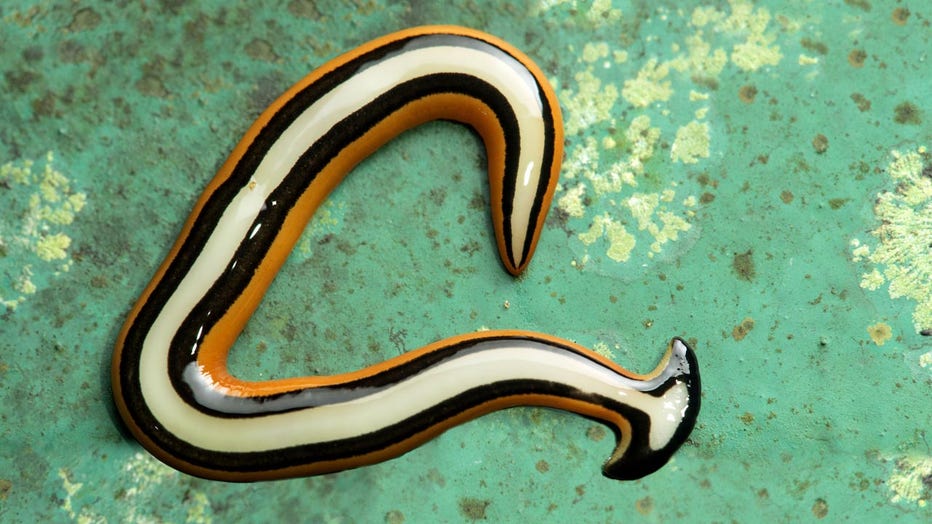Invasive hammerhead worms seen across DC region secrete same toxin found in puffer fish: professor

Hammerhead worms becoming a problem in the DMV
Hammerhead worms, experts say, are likely here in the DMV to stay. FOX 5?s Josh Rosenthal explains why that could be a problem.
WASHINGTON - Look but don't touch! That's what University of Maryland Professor Michael Raupp is saying about the invasive hammerhead worm that is being spotted more frequently across the D.C. region this summer.
The reason? They secrete potent toxins that could cause skin irritations if handled with your bare hands.
"They secrete potent, paralyzing tetrodotoxin, the same lethal toxin found in puffer fish," Raupp posted to his Bug of Week website Monday. "Tetrodotoxin is believed to incapacitate large prey so they can be consumed by the worm. This nasty toxin may also help the worm defend itself from its own predators."

Hammerhead flat worm, Bipalium sp., Land planarian family, Geoplanidae, Kinabalu National Park, UNESCO nature world heritage site, Sabah, Borneo, Malaysia. (Photo by: Gunter Fischer/Education Images/Universal Images Group via Getty Images)
Raupp said that domestic animals that contact or consume the worms could experience discomfort or illness. He said people who have handled the worm have reported skin irritations.
Raupp says the creepy invaders are cannibalistic. "These flatworms immobilize victims with a coating of sticky slime, evert part of their digestive tract, and plunge it into the prey, where they slurp up body fluids and small particles of tissue," according to his website.
The U.S. Department of Agriculture lists the hammerhead worm on its National Invasive Species Information Center website. The say hammerheads are predators of earthworms, and could potentially impact agricultural, horticultural, and natural ecosystems.

Invasive hammerhead worms seen across DC region
Look but don't touch! That's what University of Maryland Professor Michael Raupp is saying about the invasive hammerhead worm that is being spotted more frequently across the D.C. region this summer.

